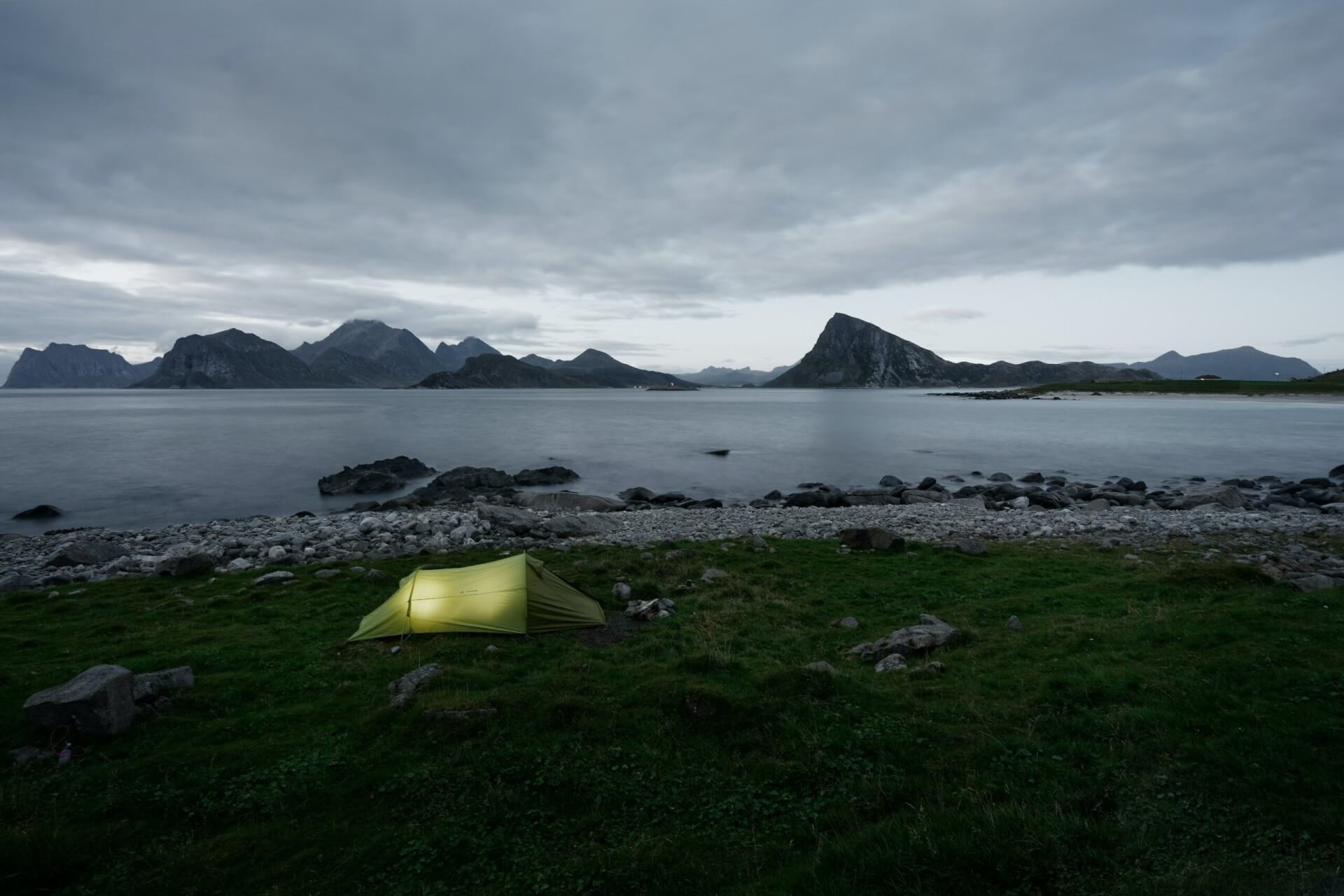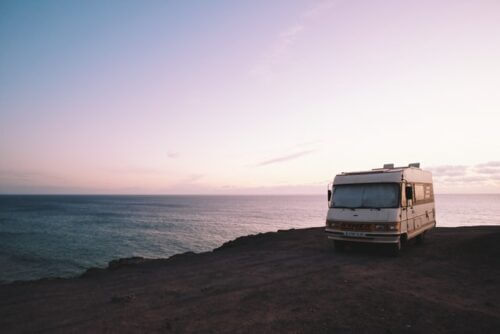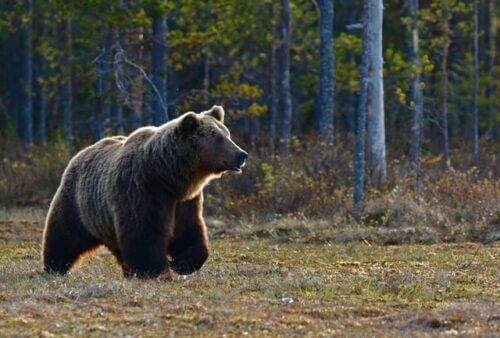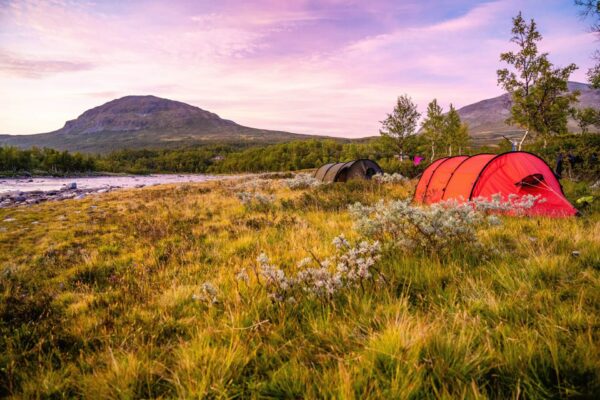When it comes to wild camping, Sweden is one of the most popular European countries. This is mainly due to the right of public access, which has been a tradition since the Middle Ages and regulates the use of nature. The customary right allows everyone to move freely in nature, whether on foot, by bike or on skis.
In Sweden, this also includes camping. However, there are some special rules to protect nature and avoid disturbance. If you follow those few simple rules, nothing stands in the way of a great camping holiday.
However, many people don’t know what exactly they really need before their first trip. It’s not easy not to pack too much or too little. What exactly that means depends on you and your specific travel plans, but there are a few things you should generally think about.
To make your planning as easy as possible, this article has summarised what exactly is allowed, what you need to pay attention to and what equipment you will need on your trip.
What you should bear in mind when wild camping in Sweden
Compared to the UK, the rules regarding wild camping are very relaxed in Sweden. However, it is essential to pay attention to the few existing ones, to keep it that way. Most of them are self-evident, but when it comes to things like picking berries, making a fire or fishing, for example, a few questions may arise.

Where is wild camping allowed?
In the countryside, you can camp almost anywhere. Exceptions are nature reserves, agricultural land, private land within sight of houses, urban parks and areas such as sports fields. As private land is not always fenced in and therefore not directly recognisable, especially in the countryside, you should simply stay out of sight of houses. In the vast Scandinavian countryside and outside the urban centres, that is however not a problem.
How long can I camp in one place?
In general, you should move on after one night. However, two nights are usually tolerated if you don’t disturb anyone.
What do I need to bear in mind?
The top priority when wild camping is, of course, not to disturb nature or local residents. You should therefore take your rubbish back with you and leave the site as you found it.
Making a fire while wild camping
If you want to light a fire, you should find out whether there is a current ban in your region, due to the risk of forest fires. Apps such as “Brandrisk Ute” show you the risk in different colours. You should also look for existing fire pits and use them. Only use brushwood lying on the ground as fuel, not branches from growing trees and don’t forget to extinguish the fire properly afterwards.
Picking berries and flowers
The general rule is: berries, mushrooms and the like may be picked for personal use. You are also allowed to pick flowers. However, you should make sure that you stay away from plants that are protected.
Hunting and fishing in Sweden
There are local differences when it comes to fishing, especially in national parks. You can generally fish in public waters without a fishing licence if it is not prohibited. You always need a licence to hunt.
Are you allowed to park your motorhome in Sweden?
With a motorhome, you are somewhat more restricted than with a tent when it comes to choosing a place to stand. You are allowed to stand in public car parks and on the road for 24 hours. At weekends and on public holidays, this is extended until the next working day.
If you don’t want to spend (every night) at a campsite, it’s a good idea to keep an eye out at the end of the road. There you can sometimes find idyllic, undeveloped car parks by lakes or near the sea. Apps like Park4night can help you finding those.

Is wild camping dangerous in Sweden?
Wild camping in Sweden is generally not dangerous. Nevertheless, there are a few things to bear in mind so that you can feel safe in the great outdoors – first tip: Keep calm!
Overall, it can be said that Sweden is a very safe country. Especially if you are travelling in less densely populated areas and perhaps set up camp in the middle of the forest, the chance of being attacked is extremely low.
If you are camping near a road, it is advisable not to pitch your tent in direct sight of the road. You should also avoid motorway service areas and direct proximity to large cities.
If you are travelling by car or motorhome, you should not leave your valuables in the car during a day trip, as stand-alone vehicles, especially if it is obvious that they belong to tourists, are sometimes broken into.
Danger from wild animals?
Another question that many prospective campers ask themselves before their first trip is whether there are any wild animals that could be dangerous to them. In Sweden, there is not a particularly huge danger.
However, what is usually underestimated is the danger that moose pose to road traffic. They are unlikely to attack you when you are camping or hiking. The same applies to wild boar. As long as you keep your distance, especially during the breeding season, you won’t have any problems.
In the north, around Lake Vänern, there are brown bears to be found. However, these usually retreat when they notice humans. The only fatal accident in 150 years occurred in 2004, when an injured bear attacked a hunter. However, this is an absolute exception. If you do encounter a bear, stay calm, stand up and maintain eye contact.

Camping in Sweden: the equipment you will need
Equipment is particularly important when wild camping. Depending on where you camp, the nearest shopping facilities may not be easy to reach. Even if the weather conditions in the camping season in southern and central Sweden are relatively mild, you should bear in mind that you are still in the great outdoors.
A breakdown, no reception, a rain shower or even a broken camping cooker are things you should be prepared for. A first aid kit for injuries should also always be with you. Smaller things, such as spare batteries, are easily forgotten. To prevent this from happening to you, we have put together a packing list so that you are well equipped.
Packing list – what you need for wild camping in Sweden
Shelter and sleeping
- Tent
- Sleeping mat
- Sleeping bag
- Pillow (inflatable, for example)
Cooking and food
- Water canister (e.g. foldable)
- Water bottle/thermos flask
- Food that does not need to be refrigerated
- Camping stove
- 2 gas cartridges (or other fuel)
- 2 lighters, fire steel or storm-proof matches
- Camping cutlery and crockery (don’t forget a can opener)
- Biodegradable washing-up liquid
- Sponge, brush and tea towels
- Rubbish bags
Useful
- Light source (torch for cranking or with spare batteries; headlamp)
- Pocket knife/multitool
- Tape
- Kitchen roll
- Travel detergent
- Washing line
- Smartphone with helpful apps and power bank
Clothing and weather-related items
- Change of clothes (reduce, especially when hiking!)
- Rain jacket
- Sturdy shoes
- Sandals or flip flops (especially in hot weather)
- Sun cream, sunglasses and hat
- Mosquito spray
Hygiene
- Toothbrush and toothpaste
- Shampoo/shower gel (preferably in one)
- Hand sanitiser
- Cream
- Towel (space-saving and quick-drying)
- Brush
- Deodorant
- Nail scissors
- First-aid kit
- Toilet paper
- Contraceptives and pads/tampons/menstrual cup, if necessary
- Razor, if required
- Glasses, contact lenses and care accessories if necessary
For minor and major emergencies
- First aid kit
- Repair kit for the tent (spare pegs!)
- Tools (folding spade, hammer, mini shovel)
- Spare tyres (and puncture repair kit for the car)
- Travel guide/hiking maps so that you can orientate yourself without electricity; compass
Travel Basics
- Identity card or passport
- Driving licence (if you drive)
- Cash in Swedish kronor
- Credit card (cash is not accepted everywhere)
- Insurance documents (foreign health insurance and car insurance)
- Waterproof document cover
Comfort
- Camping chairs and table
- Lightweight hammock for travelling
- Picnic blanket
- Cool bag
- Additional blanket
Bonus tips
- Tent set-up: Test the tent set-up beforehand and don’t forget to waterproof it if you haven’t already done so.
- Water: With a water filter or purification tablets you are always well supplied with liquid.
- Powdered milk: Powdered milk is a good way to avoid the cooling problem.
- Reduce your luggage: If you are travelling with others, coordinate your packing and use everything that is possible together. Shampoo, sun cream and similar items are particularly easy to share.
- Medical emergencies: Especially if you have medical conditions, your travelling companion should know what to do in an emergency. Look for camping sites with mobile phone reception and know the Swedish emergency numbers (112).
- Environment: All consumables that could end up in the groundwater should be biodegradable and used sparingly.
- Snow chains: Especially in the north, you’ll need snow chains sooner than you might think.
- Wind: If you are parked in the open, especially by the sea, you should be prepared for wind. Correct bracing is particularly important here.
